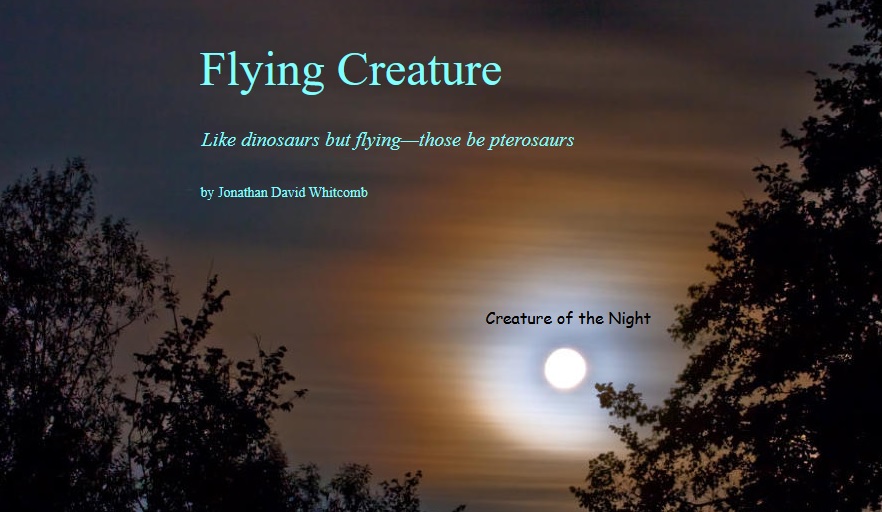The following are various online sources, offering an open-minded look into sightings of apparent modern pterosaurs or “pterodactyls”.
.

Cognitive Biases and Living Pterosaurs (press release)
A recent study suggests cognitive biases like loss aversion and availability cascade have hindered public awareness of eyewitness reports of “modern pterodactyls” in the USA.
.
What does the Mokele-Mbembe have in common with the kongamato? Both are unclassified by Western science and unacknowledged in biology textbooks, for they both live in the realm of cryptozoology.
.
Declaration on Living Pterosaurs (pdf)
Most of the following are from direct eyewitness testimony sent by email to the cryptozoologist Jonathan Whitcomb, who now lives in Murray, Utah. Some of the reports, however, involve more direct communication with the persons encountering the flying creatures: face-to-face interviews and phone conversations.
.

Like dinosaurs but flying—those be pterosaurs
.
Flying Dinosaur (nonfiction book on living pterosaurs)
Many people, around the world, have seen a strange flying creature: something appearing unlike any bird, for it has no feathers. These animals are also unlike any bat, many of them having very long tails.
.
Foolverism – a fault in reasoning
The word bulverism was coined by C. S. Lewis, in the mid-20th century, in response to a growing habit people were forming: avoiding discussion of an issue by ridiculing the one proposing it or trying to make that person appear unqualified or untrustworthy.
To destroy confidence in an idea, some kind of authority finds an unrelated concept, one that is completely unbelievable to almost everyone, a secondary concept that seems to resemble the original idea but which has only the most superficial relationship to it. The authority mentions the unbelievable secondary concept while relating it to the original idea. That declaration will cause some people, at least, to see the original idea as tainted, at least, partly because of the apparent credibility of the authority.
.
Jonathan Whitcomb, before and after writing “Searching for Ropens, Living Pterosaurs in Papua New Guinea,” received emails from many eyewitnesses of similar creatures in the U.S. Four years after returning from his expedition in Papua New Guinea, he started writing a new nonfiction: Live Pterosaurs in America.
.
“The flying light seen one night in 2004, in Papua New Guinea, by a New Hampshire businessman, was a living pterosaur, according to the . . . book Searching for Ropens. David Woetzel was watching the sky, for a creature known, by natives of various languages, as duwas, kundua, seklo-bali, and kor, but on the island Woetzel was exploring, it is ropen.”
.
Live pterosaurs? Says who? Well, the eyewitnesses. Sightings have been reported by not only natives but by Australians and Americans; not only at night but in daylight; not only by those who believed they would see a live pterosaurs but by those just lucky enough to be at the right place at the right time . . .
.
What comes to mind when you read “dinosaur?” Probably “extinct” or “extinction.” What about the word “ropen?” Until 2007, when the Sci-Fi Channel gave us the Ropen episode of Destination Truth, most Americans would think “jump rope’in” or “cowboy rope’n a steer.” But gradually Americans are coming to learn about a strange flying creature . . .
.
###


